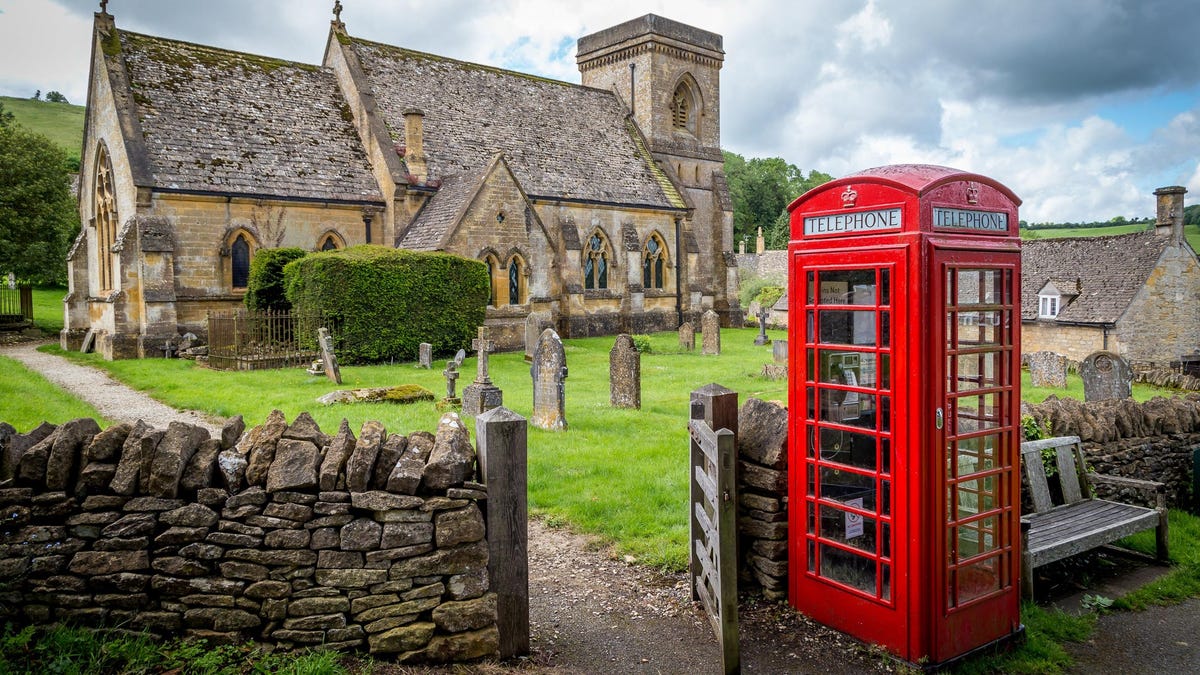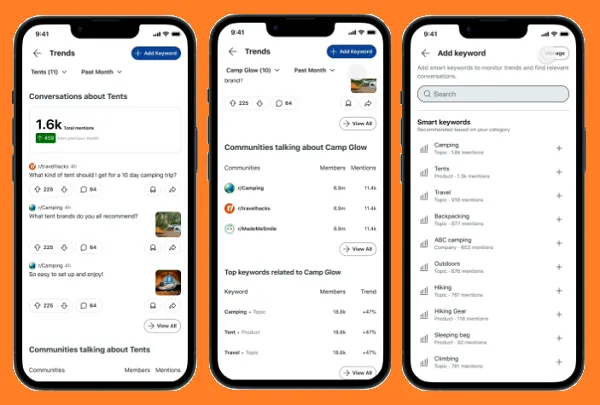9 Ways to Talk to the Dead
According to Psychology Today, as many three-quarters of bereaved people report some kind of after-death communication with loved ones. This could come in the form of a dream, a feeling, a favorite song on the radio, just about anything,...


Photo: Jakub Vana (Shutterstock)
According to Psychology Today, as many three-quarters of bereaved people report some kind of after-death communication with loved ones. This could come in the form of a dream, a feeling, a favorite song on the radio, just about anything, really. I’m going to discount the most likely and most boring explanation for this—the emotional upheaval of losing a loved one makes us imagine things to give ourselves comfort—and assume that it’s at least possible to communicate with the afterlife.
If it is possible to speak to the dead, how you do it can be hazy; this is the spiritual world we’re talking about after all. But each of these methods has its believers—and I’ve rated each one on an entirely arbitrary scale of usefulness, too.
Ouija board

Photo: Fer Gregory (Shutterstock)
Home Ouija boards have been on sale since the 1890s, and they’ve grown to have a strange place in American pop culture—they are a tool for an enacting occult rituals to speak with the dead, but you can buy one at any local toy store.
Skeptics say these boards work by way of the ideomotor effect—tiny, unconscious movements from users cause the planchette to move—but there’s a long history of people earnestly using them to try to talk to the spirit world and breathlessly reporting success.
I’ve never been able to make a Ouija board do anything but spit out random letters, but people I know say they’ve have had truly spooky witchboard experiences. It seems to help if you’re under 15 years old.
If you’re going to use a Ouija board to reconnect with your great uncle Ned, all you need do it buy one from Parker Brothers and follow the instructions on the box. But be warned! Some say the board could result in a demon entering your life. It won’t, because if demons actually existed (and they don’t) they’d be too busy to deal with you.
Rating: 4 out of 10. Setting up the board and the proper mood can be challenging and inconvenient, plus it requires at least one other person to operate. If you can find another way to talk to the dead, go with that.
Mirror gazing

Image: zef art (Shutterstock)
Whether it’s the hoary trope of a fortune teller staring into a crystal ball or the shiny obsidian “shew-stone” used by occultist John Dee to talk angels, reflective surfaces have been connected to various occult practices for hundreds of years. One popular method of mirror-aided supernatural communication is called the Psychomanteum. Some say the ancient Greeks used a Psychomanteum to talk to the dead, but scholars who have studied ancient Greece say, “No, they didn’t. What are you even talking about?” Either way, the modern Psychomanteum comes from Raymond Moody, whose 1993 book Reunions: Visionary Encounters With Departed Loved Ones describes talking to dead relatives through a mirror.
To try out his techniques, sit in a dimly lit room with large a mirror angled so it doesn’t reflect you. Relax, and think about the person you want to speak with. Then they’ll either appear in the mirror or they won’t. My money is on “they won’t,” but what do I know? (Whatever you do, do not say “Bloody Mary” three times.)
Rating: 6 out of 10. We all want our departed loved ones to appear to us in a mirror, but this is how you end up with Candyman.
Hiring a medium

Photo: Photographee.eu (Shutterstock)
I encourage you to try every method of communicating with the dead listed here (and any other you can think of) except one: paying for a medium’s help. Charlatans have been making money by faking supernatural powers since forever, and “mediums” are the worst of the bunch. They prey on people who are grieving.
My own psychic research has revealed that the spirits specifically don’t talk to people who charge for their services. It’s not morality; it’s the spirits saying, “What’s in it for me?’ The ghost is doing all the work in this scenario, and getting none of the profits since their currency is invisible ghost money. They would sue if there was a court they could use.
Rating: 0 out of 10. This is the only spirit-communication method that’s bound to fail.
Holding a séance

Photo: Everett Collection (Shutterstock)
Séances, as we understand them, developed during the Victorian age, when up to 11 million Americans identified as “spiritualists,” and Marie and Pierre Curie, Frederick Douglass, Mary Todd Lincoln, and Queen Victoria all attended séances. The practice largely died out after many of the prominent psychic mediums who hosted séances were shown to be frauds, and many religious leaders condemned spiritualism from the pulpit (presumably upset others were working their side of the block). None of this means you can’t host your own séance to see if it works, though.
Rating: 4 out of 10. Most Victorian séances culminated in the spirit ringing a bell, blowing a trumpet, making a table float, or scrawling something on a chalkboard. Cool tricks, but not especially useful if you are looking to have a meaningful conversation.
Telephone to the dead

Photo: Everett Collection (Shutterstock)
It’s easy to land on the skeptical side when it comes to communicating with the dead—people have been trying for a long time and there’s no good evidence that it has ever worked—but before you write off the idea altogether, consider Alexander Graham Bell.
Bell invented the telephone and was instrumental in the development of the metal detector, the hydrofoil, wireless technology, and more. He also spent at least some time working on a spirit phone designed to amplify the ghostly whispers that surround us. He doesn’t seem to have actually designed or built anything, though.
It’s understandable that Alexander Graham Bell and his contemporaries believed that the dead could speak to us through electricity. At the time, the force was new, barely understood, and clearly powerful enough to transform all of human society, so why shouldn’t it also allow us to pierce the veil between the living and the dead?
Rating: 8 out of 10. If Bell’s machine for talking to the dead could be built, it would be a great way of talking to the deceased.
Through a child

Photo: riggleton (Shutterstock)
All babies can talk to the dead. They’ve just arrived from the spirit world themselves and can still see and hear beyond the veil. When your infant is babbling away in baby talk to no one, they’re actually having a deep conversation with the specters that haunt your home in the hidden tongue of The Beyond.
The maddening thing is that babies lose the ability to communicate between worlds around when they learn to speak human language—it’s as if the words that bond us to the living separates us from our true homes in the ether. So parents only have a brief window when a baby can half-communicate with you and half communicate to the spirit world. Take advantage of it and ask your child questions about their ”imaginary” friends. It might be great-grandma they’re talking to.
Pro tip: The only way to slightly extend the sweet-spot is to give baby a toy telephone. Ghosts love talking to children on toy telephones for some reason.
Rating: 0 out of 10. I made all of that up.
8 / 11
Tape recorders, EMF detectors, and other technology
Tape recorders, EMF detectors, and other technology

Photo: Rudenkois (Shutterstock)
Using technology to talk to the dead didn’t die with Alexander Graham Bell. The modern expression of it can be seen in ghost hunters (both the kind with basic cable TV shows and those without them) who hunt for spirits using technology like EMF detectors, high-pitched sound generators, and more.
To actually talk to the dead, the equipment of choice among ghost hunters is a simple tape recorder. They’re trying to capture EVP, or “electronic voice phenomena,” snippets of conversation from the dead who walk the earth.
This is a really easy method of spirit communion you can do anywhere. Just go somewhere dark and quiet, shout a question into the void, and hit record on your tape machine. Old reel-to-reel works best, because it’s antique and thus scarier, but you can use the voice memo app from your iPhone in a pinch. When you’re back home, play back your recording; if you’re lucky, you may have captured a ghostly voice responding to you. It seems to work better with staticky, older tape, too.
Examples of EVP I’ve heard online are far from convincing—they seem more like stretched interpretations of random noises and radio interference than voices—but hey, give it a shot anyway. I may be wrong.
Rating: 3 out of 10. Ghost voices on tape are usually just some random spirit, and conversations usually consist of cryptic phrases. This is not the basis for a good conversation with a specific person.
Near-death experiences

Photo: UschiDaschi (Shutterstock)
Many people who have clinically died and been revived report seeing and/or talking to deceased relatives while teetering between life and death. They often say their loved ones greeted them as they floated toward the light in order to reassure them that death is actually awesome.
Near-death experiences are dangerous though, as almost all of them turn into “death experiences” very quickly. Plus, the vast majority of people who are revived after clinically dying don’t report a tunnel with a light at the end of it, a meeting with Jesus, or even a lake of eternal fire. They mostly say they experienced nothing, as if their consciousness ended.
Fun fact: Velma Thomas of West Virginia is the all-time winner of near death experiences. She was “dead” for a full 17 hours. She had no brain activity and her heart was kept beating artificially, but then she woke up, started talking, and eventually made a full recovery. As far as I can tell, she did not report going to heaven, hell, or anywhere else. Neither did this woman who was dead for six hours after freezing to death.
Rating: 1 out of 10. You’ll get to find out what happens when you die soon enough; why rush it?
In your mind

Photo: everst (Shutterstock)
Whether it’s prayer or quiet contemplation, probably the most common way people talk to dead loved ones is in their minds. This is great, except that for most of us, it’s a one-way conversation—more talking at the dead than talk to the dead. But a lot of people get the overwhelming impression that their mother/father/pet is answering back, usually with an abstract, “everything is cool, live your life” message; rarely with a map to where the gold is buried.
I don’t believe in this kind of thing, but I don’t discount it in other people either. How could I know what someone else experiences? Plus, if it gives people some comfort, it’s all good. As long as everyone respects my nihilism, we can all get along.
Rating: 9 out of 10. Talking to a dead person in your head is a good way to finally win that argument you’ve been having for years. Also: You can confidently say, “It’s what they would have wanted!” whenever you make any decision, because the dead want exactly what you want.

 AbJimroe
AbJimroe 































